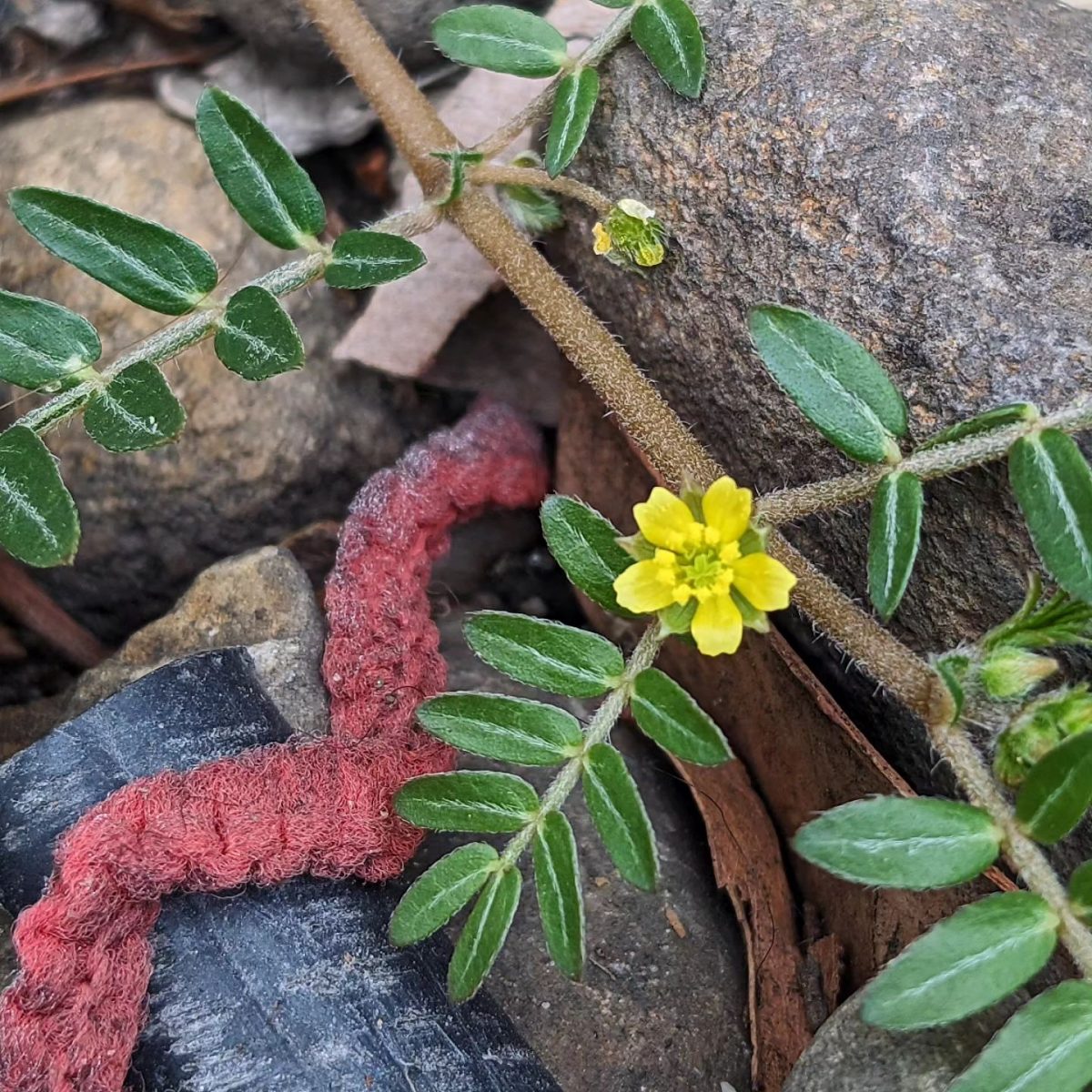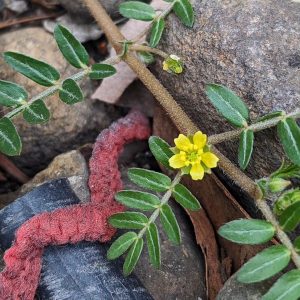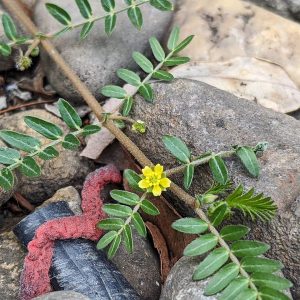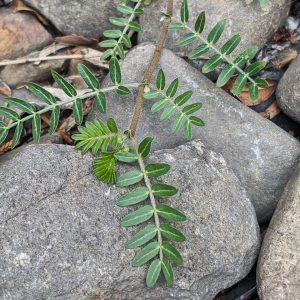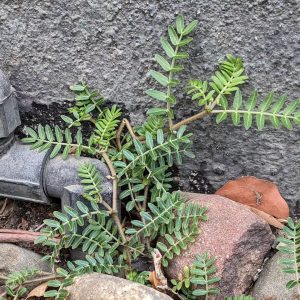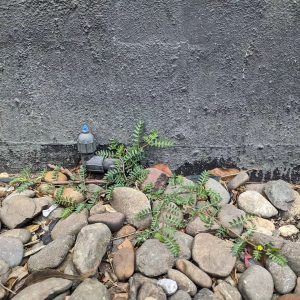Caltrop (Tribulus terrestris), a pan-tropical creeper with decidedly immodest barbed burs which now terrorise fleece, hooves, paws, hands, feet and tyres across the Australian interior.
Caltrop is thought to have originated in North Africa, spread across Eurasia with domesticated livestock, and then to the Americas and Australia with European invaders. An annual or perennial dependent on conditions, single plants can add a thousand seeds to a long-lived seed bank.
In Australia, there is evidence that the species or a close relative may have been present in parts of Queensland and the Northern Territory prior to the invasion. The Eurasian variety was introduced almost immediately on the coats of the millions of imported livestock, and spread across the dryland regions with the herds. A wool fault and work hazard, the plant is also toxic to sheep, which develop a chronic weakness called Tribulus staggers from overgrazing on the weed.
By the 1870s, Caltrop was the subject of debate and poisoning panics among NSW stockmen; early records from Victoria were made along northern border, at Mueller River (1890), Mildura (1892) and Wodonga (1908).
In 1910 the Melbourne Leader would warn of a ‘dangerous weed’ that ‘has such a keen idea of its own importance in the vegetable world and the necessity for its reproduction,’ urging no delay in efforts to exterminate the plant wherever found.
In Melbourne, Caltrop was first recorded on Coode Island in 1912. The species then went unreported in the metropolitan until 1986, when a specimen was collected from the Newmarket Saleyards at Flemington, having likely arrived at that site on livestock. It would also be noticed on nearby railway lines around Macaulay station in 1992 and further west at Bacchus Marsh in 1994.
Rather than clinging to livestock, Caltrop seeds are now more likely to arrive in Melbourne from northern Victoria as a contaminant on vehicles and in bulk materials like mulched wood and crushed rock. The occurrence photographed here was found behind a Richmond car wash, with no fruit at the time and soon weeded out.
View Original Post on Instagram
Search for information about Tribulus terrestris in the Flora of Victoria
View information and occurrences of Tribulus terrestris on the Atlas of Living Australia
